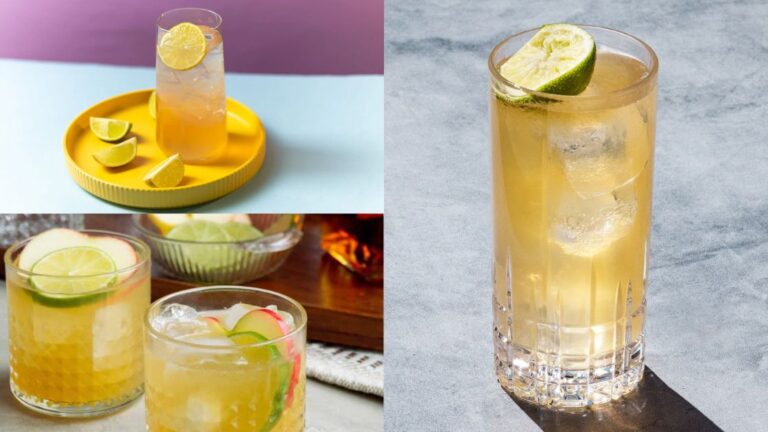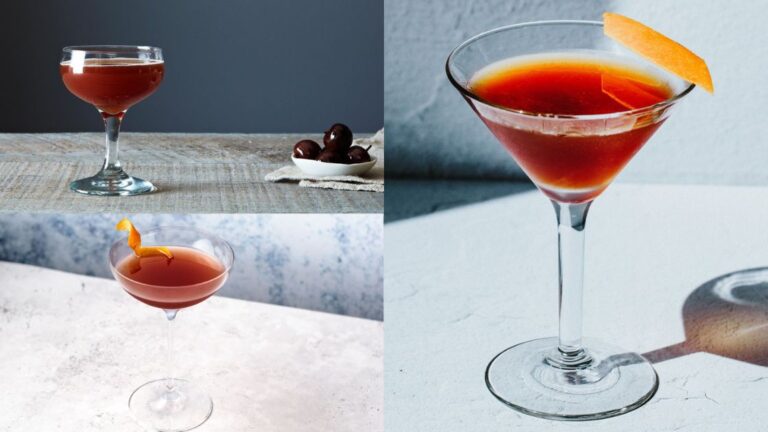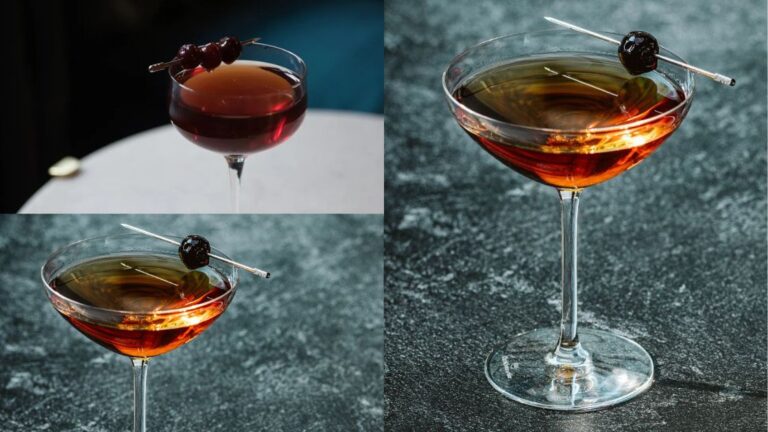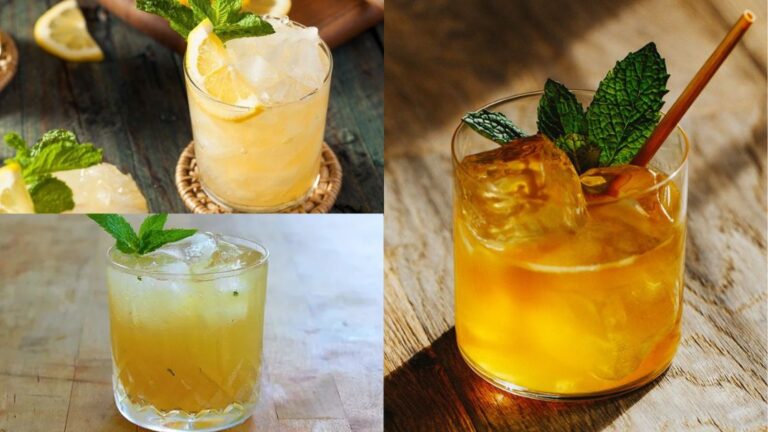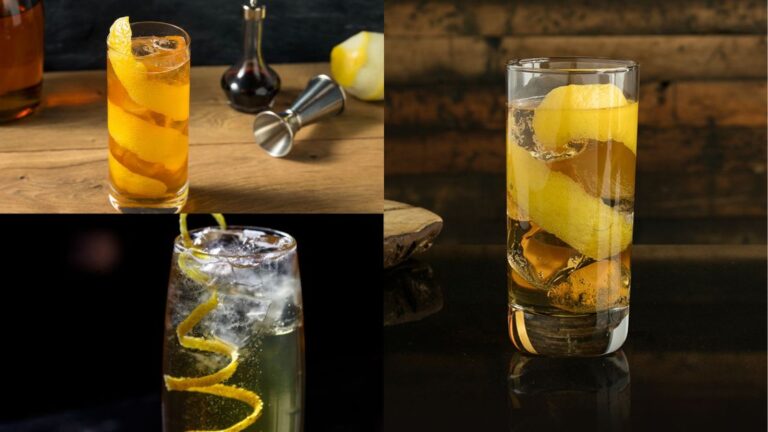Japanese whisky has captured the hearts of whisky enthusiasts and casual drinkers alike around the globe. Known for its meticulous craftsmanship and balanced flavors, Japanese whisky represents a unique blend of tradition and innovation that continues to draw admiration from connoisseurs. Unlike other whiskies, each bottle of Japanese whisky tells a story—one of careful attention to detail, respect for natural ingredients, and a commitment to continuous refinement. From the pure mountain water used in its production to the precise distillation techniques, every element of Japanese whisky reflects the dedication of its makers.
In recent years, Japanese whisky has seen an explosive rise in popularity, earning top spots in global whisky competitions and the shelves of collectors. What once was a niche market has expanded dramatically, with demand outpacing supply, leading to premium prices and limited availability. This increasing demand is fueled not only by its unique flavors, often lighter and more floral than Scotch, but also by a deep appreciation for the artistry behind each bottle. Whether sipped neat, enjoyed in a highball, or savored as part of a fine dining experience, Japanese whisky offers a refined and captivating experience that continues to enchant the world.
The Origins and Evolution of Japanese Whisky
The Scottish Influence
The story of Japanese whisky begins with one man’s journey to Scotland: Masataka Taketsuru. In the early 20th century, Taketsuru traveled from Japan to Scotland with a singular goal—learning the art of whisky-making at its source. While studying organic chemistry at the University of Glasgow, he took on apprenticeships at renowned Scotch distilleries, immersing himself in the traditional Scottish techniques of whisky production. Taketsuru became fascinated by the processes of malting, fermenting, and aging whisky, gaining invaluable insights into every stage. When he returned to Japan, he brought with him not only technical knowledge but also a deep respect for the art and precision of Scotch whisky, which would later inspire his life’s work.
Founding of Key Distilleries
Taketsuru’s expertise quickly caught the attention of Shinjiro Torii, a visionary businessman who shared Taketsuru’s passion for whisky. In 1923, Torii founded Japan’s first whisky distillery, Yamazaki, near Kyoto. Taketsuru played a pivotal role in shaping the distillery’s early production methods, applying what he had learned in Scotland. However, while Taketsuru was committed to replicating the Scotch style, Torii saw the potential for a uniquely Japanese take on whisky. Ultimately, Taketsuru departed from Yamazaki and established his own distillery, Yoichi, in Hokkaido in 1934, where he believed the climate resembled that of Scotland. This move laid the foundation for Nikka, one of Japan’s most iconic whisky brands. Over the decades, these two distilleries—Yamazaki (later under the Suntory brand) and Nikka—emerged as the primary architects of Japanese whisky’s reputation and continue to dominate the industry.
Japanese Whisky Comes into Its Own
While Japanese whisky was initially modeled after Scotch, it soon developed a character all its own. Distilleries in Japan began to innovate, focusing on precision, balance, and subtler flavor profiles that appealed to Japanese palates. Unlike Scotch, which often emphasizes smoky, peaty flavors, Japanese distilleries refined their whiskies to be lighter and more harmonious. Japanese whisky is crafted with a distinct philosophy: to achieve a perfect balance that complements food and embodies a nuanced, almost ethereal quality. Furthermore, Japanese distilleries took a different approach to blending, working independently rather than exchanging spirits with other distilleries as is common in Scotland. This self-sufficiency enabled them to create complex, multi-layered blends in-house, giving rise to a style of whisky that is refined, distinctive, and uniquely Japanese.
In embracing both Scottish tradition and Japanese innovation, Japan carved out its place on the global whisky map, offering a spirit that captures the best of both worlds.
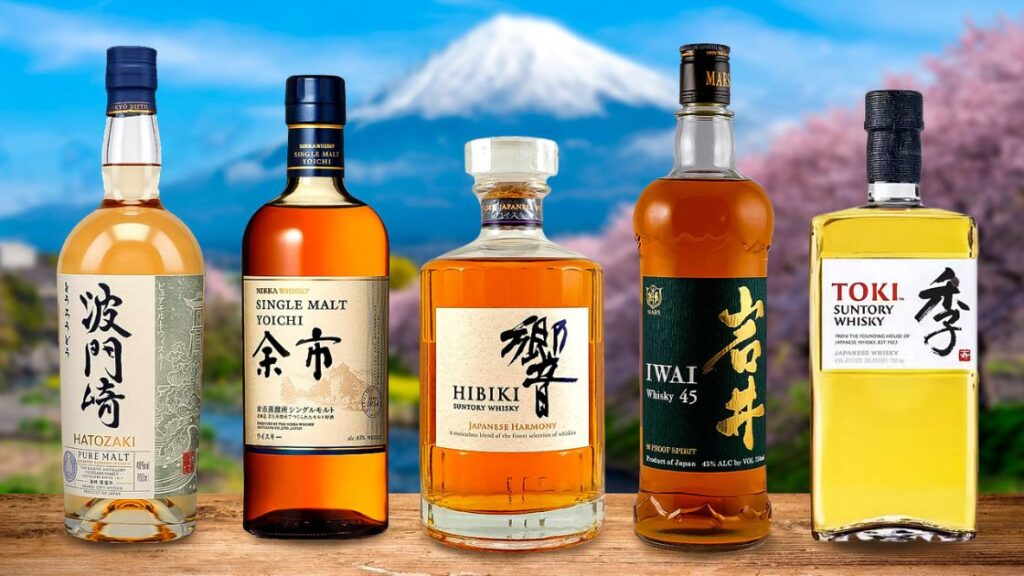
What Makes Japanese Whisky Unique?
Focus on Perfection and Innovation
Japanese whisky is deeply rooted in a philosophy of continuous refinement and innovation. Distillers in Japan are driven by a commitment to perfecting each aspect of the whisky-making process, often drawing from traditional practices while simultaneously pushing the boundaries of what whisky can be. This pursuit of excellence influences every step—from the selection of ingredients to the careful distillation and blending processes. Japanese distillers are known to experiment with unique barrel types, innovative yeast strains, and new distillation techniques, all in an effort to enhance the quality and balance of their whisky. This dedication results in whiskies that embody a harmonious blend of flavors, often marked by delicate, floral notes and a remarkably smooth finish. For Japanese distillers, whisky-making is both an art and a lifelong commitment to refinement.
Self-Sufficiency in Blending
One of the defining characteristics of Japanese whisky is the unique approach to blending. Unlike Scottish distilleries, which often exchange whiskies with other distilleries to create blended expressions, Japanese distilleries operate independently, producing a wide array of spirits in-house. This self-sufficiency allows them to maintain complete control over the blending process, creating a distinct and cohesive flavor profile unique to each brand. Major players like Suntory and Nikka own multiple distilleries in diverse regions across Japan, each with varying climates and production methods, enabling them to produce a vast array of styles. As a result, Japanese whisky blends are incredibly layered and complex, crafted to reflect the brand’s unique vision without the influence of external flavors. This independence in blending has become a hallmark of Japanese whisky, giving each brand a consistent, signature taste that is both recognizable and revered.
Seasonal Distillation Process
In Japan, whisky production is closely tied to the changing seasons, a practice that adds to the spirit’s uniqueness. Japanese distilleries often produce whisky seasonally rather than continuously throughout the year, as is common in Scotland. This approach, rooted in Japanese cultural practices, aligns whisky production with natural rhythms, which can impact everything from fermentation rates to the aging process. The seasonal cycles of temperature and humidity in Japan affect how whisky matures, resulting in distinct flavor nuances with each batch. In spring and summer, warmer conditions can accelerate certain aspects of fermentation, while colder autumn and winter months slow down the process, allowing flavors to develop more gradually. This seasonal approach not only influences annual whisky yields but also adds a layer of complexity to the final product, making each bottle of Japanese whisky a unique reflection of nature’s timing.
In these ways, Japanese whisky stands apart—crafted with an unwavering focus on precision, independence in blending, and a reverence for nature’s cycles. Each bottle tells a story of dedication, care, and a commitment to creating an exceptional whisky experience.
Distinct Ingredients and Production Techniques
Use of Imported Barley and Unique Yeasts
Japanese whisky makers pay close attention to their ingredients, beginning with the barley itself. In pursuit of quality, many Japanese distilleries import malted and peated barley directly from Scotland, which brings a subtle Scottish influence to their whiskies. However, the process is uniquely Japanese, particularly when it comes to fermentation. Distilleries in Japan often use a diverse range of yeast strains, each carefully selected to bring out specific flavors and aromas. Some distilleries even cultivate their own unique strains to further enhance the complexity of their whisky. These yeast strains add delicate floral and fruity notes, contributing to the nuanced character that Japanese whisky is known for. This dedication to both tradition and innovation through ingredients is a key part of what makes Japanese whisky so distinct.
Pure Spring Water and High Elevations
Water quality is paramount in Japanese whisky production, and many distilleries are located in remote, pristine areas renowned for their pure spring water. For Japanese distillers, the mineral content and purity of the water are crucial, as they believe it enhances the overall smoothness and balance of the whisky. Distilleries like Hakushu and Yamazaki are positioned near mountain springs and rivers, allowing them to draw on this naturally filtered, high-quality water. In addition to pure water sources, many Japanese distilleries are situated at high elevations. At these altitudes, the lower boiling point during distillation preserves subtle flavors and aromas, resulting in a smoother, more refined whisky. These natural elements—pure water and high elevation—contribute to the elegance and purity often found in Japanese whiskies.
Varied Barrel Types
Japanese distilleries are known for their creative approach to aging, using a variety of barrel types that impart unique flavors to their whisky. Alongside standard ex-bourbon barrels, which lend hints of vanilla and caramel, Japanese distilleries also age their whiskies in sherry casks, which add layers of rich, dried fruit and nutty notes. Perhaps the most distinct and sought-after barrel type is Mizunara oak, native to Japan. Mizunara imparts a complex array of flavors, including hints of sandalwood, coconut, and subtle spices, giving Japanese whisky an unmistakable aromatic profile. However, Mizunara barrels are rare and difficult to work with, as the wood is porous and prone to leakage. Despite these challenges, Japanese distillers have embraced Mizunara aging, believing the wood’s unique characteristics are worth the effort. This range of barrel choices adds incredible depth and variety to Japanese whisky, making each bottle a true reflection of Japan’s artistry and attention to detail.
Through their meticulous selection of ingredients and innovative production techniques, Japanese distilleries craft whiskies that are refined, complex, and uniquely their own. Each bottle embodies Japan’s respect for tradition and passion for excellence.
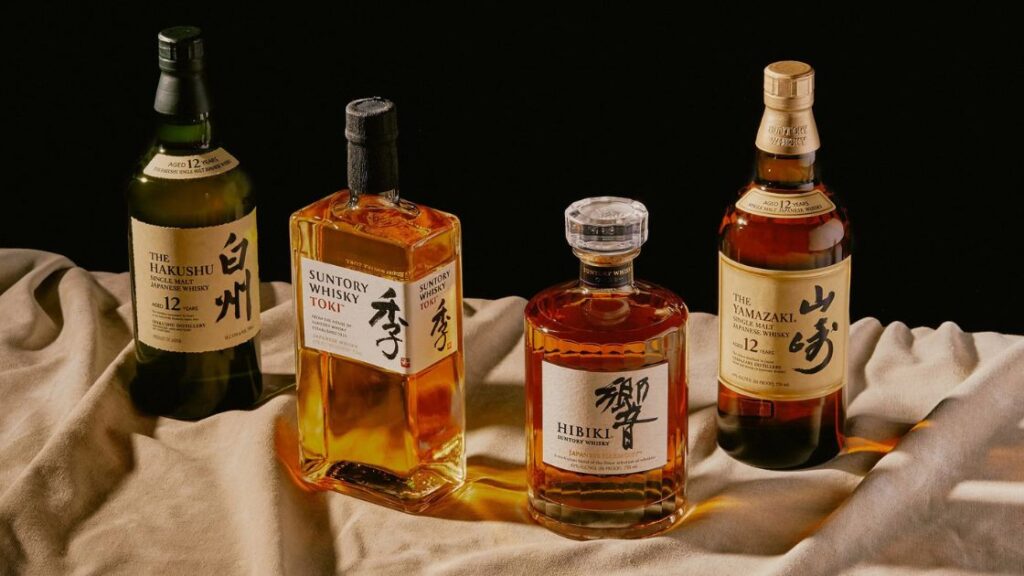
Iconic Japanese Whisky Flavors and Styles
Single Malts vs. Blended Whiskies
Japanese whisky offers a broad spectrum of flavors, from bold single malts to smoother, lighter blends. Single malts in Japan are often crafted in the Scottish tradition, with a focus on depth and complexity. Some, like the Yoichi single malt from Nikka, even carry a smoky, peaty character, similar to that of traditional Scotch. These single malts tend to be robust and layered, appealing to those who enjoy intense, earthy flavors.
On the other hand, Japanese blended whiskies are known for their smooth, mellow qualities, designed to be easy on the palate and often enjoyed with food. Blends like Suntory’s Hibiki and Toki are delicately balanced, with a gentle sweetness and a softer profile, making them popular choices for pairing with meals or enjoying in a highball. These blends emphasize harmony, highlighting the Japanese philosophy of creating a whisky that complements rather than overpowers.
Influence of Japan’s Climate on Aging
One of the unique aspects of Japanese whisky is how quickly it matures, thanks to Japan’s varied and humid climate. Japan experiences distinct seasons, with hot summers and cold winters, which create an environment that speeds up the aging process. As whisky ages in this climate, the wood of the barrel expands and contracts more frequently, allowing the spirit to interact more intensely with the barrel. This accelerated aging process gives younger Japanese whiskies the richness and complexity of much older whiskies, often resulting in flavors that feel “aged” beyond the actual years on the bottle. This natural influence allows Japanese whisky makers to produce remarkably mature-tasting whiskies in less time than would be typical elsewhere.
Light and Fragrant Profiles
Japanese whisky is often celebrated for its light and fragrant profile, which distinguishes it from heavier, more robust whiskies from other regions. Many Japanese whiskies are delicately floral and fruit-forward, with notes of cherry blossom, plum, and pear, creating a soft and elegant drinking experience. This approach reflects Japan’s focus on balance and subtlety, with flavors that are intricate but not overpowering. Distilleries achieve this by carefully selecting ingredients, refining distillation techniques, and using unique barrels that enhance these lighter characteristics. The result is a whisky that is graceful, complex, and perfect for those who appreciate a refined, sophisticated spirit.
In this way, Japanese whisky captures a distinct essence—flavorful yet balanced, subtle yet memorable, offering something special for every whisky lover.
Must-Try Japanese Whiskies for Every Level
Entry-Level Favorites
For those just beginning their Japanese whisky journey, Suntory Toki and Hibiki Japanese Harmony are excellent choices. Suntory Toki is light, crisp, and versatile, often enjoyed in a classic highball or sipped neat. Its flavor profile includes notes of green apple, basil, and honey, making it refreshing and easy to drink. Hibiki Japanese Harmony, on the other hand, offers a more complex experience while remaining approachable. Blended from several malts and grains, it has delicate hints of orange peel, white chocolate, and subtle florals. Both of these whiskies provide an introduction to the elegance and craftsmanship of Japanese whisky at a friendly price point, ideal for casual enjoyment or cocktails.
Mid-Range Gems
For those ready to explore deeper flavors, Yamazaki 12-Year and Hakushu 12-Year are renowned mid-range options that showcase the complexity of Japanese single malts. Yamazaki 12-Year is celebrated for its full-bodied, rich profile with hints of tropical fruit, toffee, and subtle spice, offering a sophisticated balance of sweetness and depth. Hakushu 12-Year, on the other hand, brings a fresh, herbal character, with smoky undertones and crisp notes of pear and mint. Its mountain-distilled origins lend a unique vibrancy to the whisky. Both of these mid-range selections blend complexity with approachability, making them perfect for those looking to deepen their appreciation of Japanese whisky’s unique flavors.
High-End and Collector’s Bottles
For whisky enthusiasts and collectors, Japanese distilleries offer a range of exclusive, high-end whiskies that are both rare and unforgettable. Hibiki 21-Year is one of the most coveted blends, known for its intricate layering of dark fruit, dried apricot, sandalwood, and rich oak. Aged meticulously, it embodies the refined elegance that defines Japanese whisky, making it a prized addition to any collection. Another highly sought-after bottle is the Hakushu Sherry Cask 1989, a rare expression from Suntory. Aged in sherry casks, this whisky is bold, with deep notes of dried fruit, dark chocolate, and an earthy smokiness that make it an exceptional choice for seasoned whisky lovers. These high-end bottles represent the pinnacle of Japanese whisky-making, valued not only for their depth and richness but also for their rarity.
Whether you’re a newcomer, a dedicated enthusiast, or a collector, Japanese whisky offers something extraordinary at every level, promising a memorable experience with each sip.
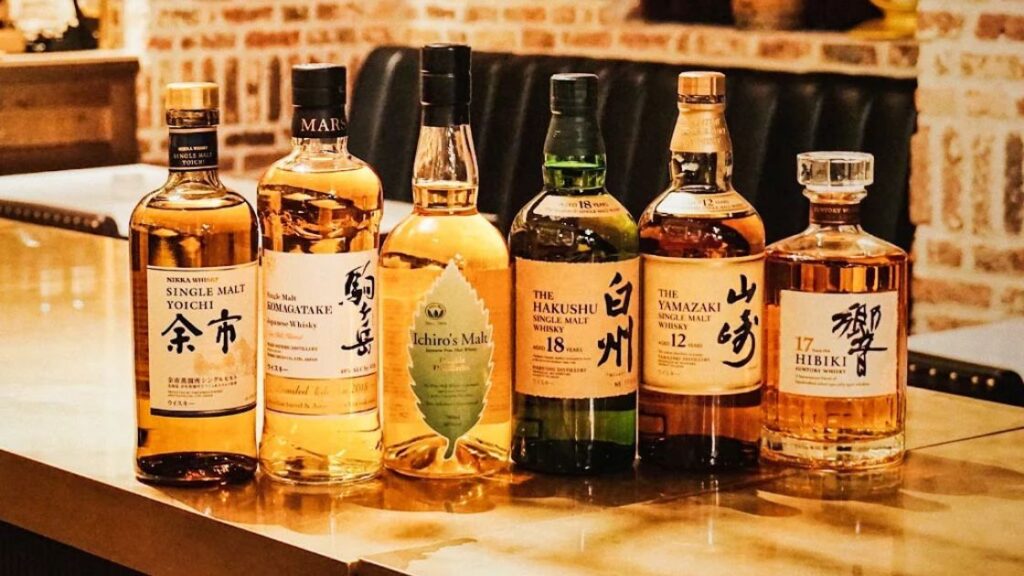
Enjoying Japanese Whisky: The Cultural Approach
Japanese Whisky and Food Pairing
One of the distinctive aspects of Japanese whisky culture is its seamless integration with food. Unlike some whiskies that are enjoyed solely on their own, Japanese whisky is crafted to be food-friendly, with flavors that are often more subtle and balanced. This approach allows the whisky to complement rather than overpower the meal, enhancing the dining experience. For instance, lighter, floral whiskies like Hibiki Japanese Harmony pair beautifully with Japanese dishes such as sashimi or tempura, where the whisky’s delicate notes of fruit and honey harmonize with the freshness of the food. Meanwhile, slightly peated whiskies like Hakushu bring an earthy, smoky dimension that works well with grilled or roasted dishes. This tradition of pairing whisky with food reflects the Japanese philosophy of harmony, where each element of the meal is meant to elevate the whole experience.
Popular Serving Methods
Japanese whisky culture also celebrates specific serving styles that emphasize refreshment and balance, making whisky more accessible and versatile. The Japanese highball is perhaps the most iconic way to enjoy whisky in Japan. Made with a base of whisky, plenty of ice, and a generous splash of soda water, the highball is light, refreshing, and perfect for pairing with a variety of dishes. This cocktail’s clean and crisp profile brings out the whisky’s subtler flavors, making it an ideal choice for casual enjoyment.
Another popular way to enjoy Japanese whisky is through creative twists on classic cocktails, such as the Japanese Old Fashioned. Using Japanese whisky as the base, this cocktail includes hints of yuzu or a touch of Japanese bitters for a unique flavor. The Japanese Old Fashioned honors the original cocktail while adding a local touch, showcasing the flexibility and nuanced flavors of Japanese whisky. Other inventive cocktails include the Whisky Ginger Highball, adding a touch of ginger beer, or the Whisky Smash with fresh mint and citrus.
By pairing whisky with food and enjoying it through various cocktails, Japanese whisky culture is about versatility, balance, and an appreciation for fine flavors, making it accessible and enjoyable for a wide range of tastes and occasions.
The Future of Japanese Whisky
Challenges and Opportunities
The future of Japanese whisky is bright, yet it faces unique challenges as global demand continues to soar. In recent years, Japanese whisky has achieved an unprecedented level of popularity, leading to widespread shortages and a steep rise in prices. With many Japanese whiskies, especially aged varieties, in high demand, distilleries are struggling to keep up. This scarcity has driven prices upward, making it difficult for many enthusiasts to find and afford some of the most sought-after bottles. However, this demand presents an opportunity for Japanese distilleries to expand production and explore new ways to bring their whisky to a broader audience without compromising on quality. As distilleries work to increase their output and adapt to these demands, we may see a shift toward younger or non-age-statement whiskies, which allow distilleries to meet demand more sustainably while still delivering high-quality spirits.
Innovations in Production
Amid these challenges, Japanese distilleries continue to innovate, experimenting with new methods and flavors to enhance their whisky’s appeal. Many distilleries are exploring alternative aging methods, such as using smaller barrels or different types of wood, to speed up the maturation process without sacrificing depth and character. Mizunara oak, unique to Japan, has become a defining element, adding a distinctive flavor profile to many whiskies and gaining popularity globally. Additionally, new distilleries are emerging across Japan, bringing fresh perspectives and innovative techniques to the craft. Some are experimenting with unique grains, such as rice, and others are using different yeasts to push the boundaries of traditional whisky-making.
The future of Japanese whisky promises continued creativity and evolution. As distillers adapt to meet growing demand while preserving their commitment to quality, we can expect even more exciting developments, from innovative flavor profiles to expanded offerings from both established and new producers. This adaptability and drive for excellence ensure that Japanese whisky will remain a beloved spirit, continually enchanting whisky lovers worldwide.
Conclusion: The Timeless Appeal of Japanese Whisky
Japanese whisky has earned its place as one of the world’s most beloved spirits, captivating whisky lovers with its harmonious blend of tradition, precision, and innovation. From its roots in Scottish techniques to its distinctly Japanese refinement, each bottle reflects a commitment to quality and artistry. Japanese whisky stands out for its balanced flavors, versatility in pairings, and a unique cultural approach that emphasizes respect for ingredients and process. Whether it’s the subtle floral notes of a blended whisky or the complexity of a single malt aged in Mizunara oak, Japanese whisky offers something truly special.
If you’re new to Japanese whisky or already a fan, there’s always something more to discover. Take the time to explore different styles and flavors, whether it’s enjoying a refreshing highball with dinner or savoring a finely aged single malt. Japanese whisky invites exploration, and with each sip, you’ll uncover new layers of flavor and tradition that make it unforgettable. Cheers to finding your favorite bottle and experiencing the timeless allure of Japanese whisky!
Frequently Asked Questions about Japanese Whisky
1. What makes Japanese whisky different from Scotch or other whiskies?
Japanese whisky often focuses on balance, subtle flavors, and smoothness, with a unique approach to blending and a commitment to precision. Many Japanese whiskies also feature floral and fruit-forward notes, making them distinct from the smokier, peaty flavors often associated with Scotch.
2. Why is Japanese whisky so expensive?
Japanese whisky’s popularity has surged, leading to high demand and limited supply, especially for aged bottles. Many distilleries are still scaling up production to meet global demand, which has driven prices upward.
3. Can I mix Japanese whisky, or should it only be enjoyed neat?
Japanese whisky is versatile and enjoyed both neat and in cocktails. The Japanese highball, made with whisky and soda water, is a popular and refreshing way to enjoy it, especially with meals.
4. What are some good entry-level Japanese whiskies?
Suntory Toki and Hibiki Japanese Harmony are excellent entry-level options. Both are affordable, accessible, and offer a smooth, balanced taste that’s representative of Japanese whisky’s style.
5. How should Japanese whisky be stored?
Like other whiskies, Japanese whisky should be stored in a cool, dark place, upright, and tightly sealed to prevent oxidation and preserve its flavor over time.
6. What is Mizunara oak, and why is it used in Japanese whisky?
Mizunara oak is a rare Japanese wood that imparts unique flavors such as sandalwood, coconut, and spice. Although challenging to work with, Mizunara adds a distinctive depth to Japanese whisky.
7. Are there age restrictions on Japanese whisky labels?
Japanese whisky labels don’t always display age statements, especially as demand has outpaced supply. Many distilleries now offer non-age-statement whiskies to provide consistent quality while maintaining supply.
8. What is the best way to enjoy Japanese whisky with food?
Japanese whisky’s lighter, balanced flavors make it an ideal companion for food. Try pairing it with sushi, sashimi, or lightly seasoned dishes that allow the whisky’s nuances to shine.
